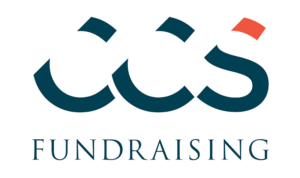The first article in our annual fund series gave an overview of the critical role that the annual fund plays in a school’s financial sustainability and provided several best practices for your school’s fundraising strategy. In this article, we will dive deeper on a subject discussed in that article: leveraging collaboration across campus to drive institutional alignment and maximize annual fund performance.
Effective communication and coordination across development, finance, curricular program, and enrollment teams is crucial for setting appropriate goals, developing compelling themes for annual fund appeals based on your school’s needs, and creating and executing effective engagement strategies across your donor base.
Goal-Setting
Involving voices from across your school’s key teams and functions is essential in setting appropriate yet aspirational targets for your annual fund performance. For example, if either a development or business office sets annual fund goals in a vacuum, they risk missing out on crucial context that should inform strategic decision-making.
While development teams understandably have the clearest picture of historical giving trends and recent fundraising performance, they can get a deeper understanding of the school’s overall financial needs for the coming year from the Head of School. Conversely, business offices might have a firmer grasp on the school’s financial metrics but are less aware of the capacity of the school’s donor base, prospect potential, or the realistic growth plan for the development team.
Fostering open communication and dialogue between these teams helps to build a collective understanding of goals and strategy, as well as a shared sense of ownership of results and performance. Schools should prioritize the establishment of processes for regular communication and sharing of relevant information to promote understanding of both the school’s overarching approach to its annual fund strategy, and teams’ individual roles in setting financial targets. Consider:
- Weekly or bi-weekly meetings with administrative leadership to discuss fundraising progress
- Monthly reports to the CFO
- Quarterly progress reports
- Space on Board meeting agendas to present fundraising priorities and progress towards stated goals
- Including administrative leadership in development committee meetings for continuity between departments
Developing the Annual Fund Theme(s)
This need for collaboration and communication is also a key component for creating a compelling theme for your appeals. An effective case for support not only resonates effectively with donors but also addresses the most important programmatic and operating needs of the school for the year. Building a set of funding priorities that effectively accomplishes both objectives should not fall on the development team’s shoulders alone.
Development teams should engage with faculty and program staff to learn about exciting new priorities for the coming year. Marketing and communications teams should be engaged to promote alignment between the year’s fundraising theme and broader marketing strategies surrounding the framing, language, and focus of a message. While development staff have the most complete sense of what priorities will resonate most with the school’s donor base, coordination across campus to gain broader perspective on the needs of the school will enhance the annual fund theme and ensure that it addresses the school’s needs and priorities for the coming year.
| Annual Fund Priorities Without Collaboration | Annual Fund Priorities With Collaboration |
| Financial Aid | High quality affordable education for all |
| Professional Development | Attracting and retaining premier educators |
| Diversity, Equity & Inclusion | Mission meeting the moment |
| Area of greatest need | Sustainability through endowment |
| Other / Programming | Robust athletics, arts, and STEAM |
Donor Engagement Strategies
Finally, effective collaboration can also play a vital role in designing creative, successful donor engagement strategies. Engaging new families around philanthropic support is a key challenge for many schools year after year. Development teams can and should work with enrollment and admissions to find innovative ways to help new families feel welcomed and integrated into the school community, while emphasizing and highlighting the important role that development and fundraising revenue play in the school’s success.
Similarly, development teams can coordinate with alumni relations staff to design more effective engagement strategies for graduates across different age groups. Making sure that your development office has a strategic approach to maintaining relationships with this vital constituency is critical to promoting a culture of philanthropy. Frequent and proactive communication between these groups can boost donor engagement and provide opportunities to grow the annual fund sustainably and effectively.
Conclusion
Collaborating across your school’s teams creates greater alignment on the goals, priorities, and tactics that underpin the success of your annual fund year-over-year. This coordination of planning, messaging, and execution will equip your development team with the resources it needs to tell the school’s story effectively and to help donors across various constituencies understand the role that the Annual Fund plays in the school’s financial sustainability. Further, embracing this collaborative mindset helps to promote a shared internal understanding of the importance of development. In this way, development can come to be thought of more as an institutional priority and can be integrated more intentionally to advance the school’s broader strategic planning.
More Insights
Charitable Giving in the UK: Fundraiser Considerations
The US and UK are bastions of charitable giving. However, fundraising is not “one-size-fits-all,” and geography influences best practices. Learn factors that differentiate philanthropic trends and donor motivations in the UK from those in the US to tailor your fundraising strategy to UK donors and achieve the best results.
Perspectives on Philanthropy | Giving USA 2024
Explore this webinar marking the release of Giving USA 2024: The Annual Report on Philanthropy, presented by CCS Fundraising in partnership with the Indiana University Lilly Family School of Philanthropy!
